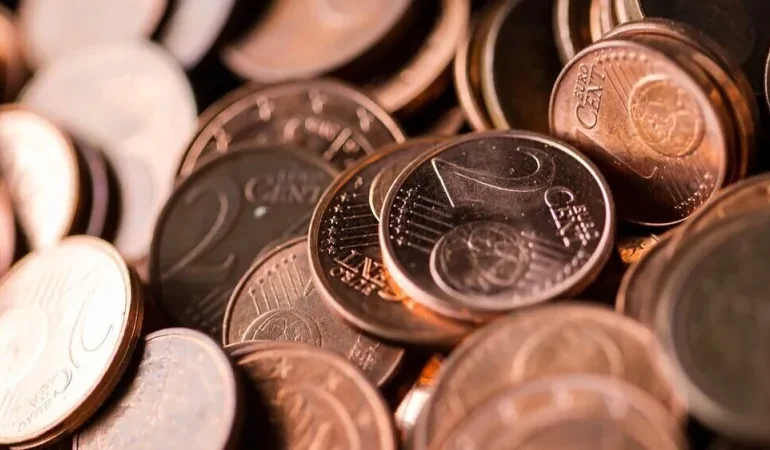Wrap of the Day Today: Seamless Dining with Meals


You might have seen it pop up on your favorite local spot’s menu: “wrap of the day today.” But what really goes into that special? Is it just a convenient way to push leftover ingredients, or is there something deeper—a spark for creativity in the kitchen, a data-driven attempt to entice new customers, maybe even an experiment in sustainable dining?
All of which is to say: this isn’t just about food. The funny thing about wrap of the day today is that it offers a glimpse into how restaurants are reimagining their daily rhythms through technology and smart menu planning. Chefs are using these rotating specials not only as a way to cut down on food waste but also as laboratories for testing out what actually works with diners who crave both novelty and efficiency.
If you’ve ever wondered how these dishes come together—or questioned whether they’re worth your lunch dollar—you’re far from alone. Restaurant owners, too, are navigating tricky waters: should they trust data analytics or their gut instinct when putting up tomorrow’s wrap? What happens when digital ordering platforms meet age-old kitchen improvisation? These questions sit at the heart of modern dining—and that’s exactly where we start our deep dive.
Real Voices Behind Wrap Of The Day Today Specials
Let’s cut through the buzzwords for a moment. When talking to restaurant owners about their approach to wrap of the day today, one theme comes up again and again: flexibility meets demand.
Take Jamie Rogers, owner of an independent deli tucked away near downtown Austin. For her team, introducing daily wraps wasn’t some grand marketing plan—it was about survival during tough supply weeks. “Some days,” she told me between prepping greens and answering online orders buzzing in on her phone app, “the only thing predictable is unpredictability.” She points out that shifting specials let her adjust quickly based on deliveries (or unexpected shortages), while keeping things interesting for regulars hooked by curiosity rather than habit.
The problem is consistency versus innovation—a tension every chef feels acutely. Another perspective comes from Sam Patel, who runs a fast-casual Mediterranean place now famous locally for its lamb shawarma wrap of the day. He breaks down his process like this:
- Scan inventory each morning—are those pickled onions running low?
- Cross-reference last week’s sales stats (his point-of-sale system crunches trends instantly)
- Add something seasonal or surprising—maybe sumac-dusted eggplant if he scored some good produce at dawn.
“It keeps my cooks engaged,” Sam explains over strong black coffee during prep hours. “We get feedback right away because so many orders come in digitally now—if we see certain combos flying off our Grubhub listing but others stall out by 11am? We switch gears before lunch rush hits.”
That blend—chef creativity mixed with hard-nosed pragmatism—isn’t accidental; it reflects changes sweeping across kitchens everywhere thanks to digital tools marrying tradition with experimentation.
How Larger Sample Sizes Reveal Dining Trends In Real Time
Consider recent findings shared by several midsize urban cafes leveraging cloud-based order management systems:
| Restaurant Type | Main Special Used | Observed Impact After Six Months |
|---|---|---|
| Deli & Grill (suburban) | “Wrap of the Day” rotation driven by surplus inventory reports + staff input. | – Food waste down 17% – Weekly unique visitors up 12% |
| Mediterranean Fast Casual (urban) | Bespoke protein/veg pairings tailored each morning based on POS analytics. | – Online review ratings increased – Repeat business via loyalty app rose 8% |
| Café Bistro (campus-adjacent) | Themed wrap series promoted via social media polls (“Vegan Mondays”, “Global Flavor Fridays”). | – Social engagement doubled – Menu tests identified breakout seller now permanent item |
What stands out here? To some extent it’s all about agility—the ability to read signals in real time and pivot accordingly.
- If chicken thighs are piling up after Monday night service? Cue Tuesday’s spiced chicken Caesar wrap special.
- If TikTok comments rave over chipotle tofu one week but ignore roasted sweet potato another? Guess which one returns soonest…
The upshot is straightforward: larger sample sizes—from walk-in traffic counts to granular delivery app data—don’t just inform short-term choices; they fundamentally shape longer-term strategy.
But beyond numbers lies something more subjective yet no less important: ownership buy-in. No amount of slick software will matter unless decision-makers feel empowered by what they’re seeing rather than overwhelmed or boxed in.
So next time you’re tempted by a cleverly worded “wrap of the day today” notification while scrolling through DoorDash options at your desk? Know there’s an entire network behind it—chefs negotiating flavor balances on fly, managers monitoring dashboards mid-shift—all working toward that seamless intersection between taste and technology.
Wrap of the Day Today: The New Face of Creative Restaurant Specials
Why are so many diners asking, “What’s the wrap of the day today?” What is it about a rotating special—be it a wrap, bowl, or chef’s inspiration—that suddenly turns a meal into an event? Here’s the upshot: people want variety. The funny thing about daily specials like these isn’t just that they keep menus interesting; they actually serve as quiet engines for experimentation and efficiency in kitchens facing mounting pressure to stand out.
The industry has caught on fast. Restaurants using daily wraps or similar features aren’t just making hungry customers happy—they’re also tightening up operations and sidestepping food waste in a world where every ingredient counts. According to recent Statista Food Delivery Report data, restaurants see this as more than just a trend: it’s become a battle plan for thriving amid digital disruption.
All of which is to say: if you’ve ever felt like your favorite eatery was reading your mind with their daily creations, there’s strategy—and serious tech—behind those tasty surprises.
How Tech Is Reinventing Wrap of the Day Today Promotions
Peek behind the scenes and you’ll spot software platforms humming away alongside chefs. QR code menus? Standard practice now. But here’s where it gets clever—AI-powered recommendation systems are starting to suggest which wrap (or bowl) might fit your taste buds, factoring in everything from weather to what you ordered last week. As industry publications highlight, dynamic pricing even lets some places tweak costs based on time or demand, nudging customers toward what’s freshest.
- Online Ordering & Delivery: With online food delivery expected to push past $192 billion globally this year (Statista), busy diners can get that wrap of the day delivered faster than ever.
- Loyalty Programs & Social Media Buzz: Digital punch cards don’t just reward repeat visits—they gather insights that feed future specials.
- Inventory Optimization: Some kitchens let algorithms decide which ingredients need moving before expiration dates hit, so “wrap of the day” becomes both creative outlet and inventory safety valve (QSR Magazine reports).
Anecdotes abound. Take one local deli testing new fillings each Tuesday—the result? Less spoilage at week’s end and regulars who show up specifically for surprises broadcast via Instagram Stories.
The Real Impact: What Happens When Dining Meets Data?
Let’s talk outcomes—not every kitchen innovation lands smoothly, but when things work, numbers speak volumes. One restaurant chain rolled out custom-built ordering apps featuring personalized recommendations; within weeks they reported a twenty percent bump in digital sales and stronger loyalty signups (Restaurant Business Magazine case study). For independent operators trialing wraps with hyper-local produce, social chatter jumped while wasted inventory dropped fifteen percent by quarter’s end—a rare win-win.
Of course, nothing comes without its hurdles:
The problem is keeping quality airtight while menu items shift daily.
There’s also training staff on whichever slick new platform hits next—all underlined by persistent worries over customer data privacy after every high-profile breach splashed across headlines (Cybersecurity Ventures analysis).
To some extent, rapid tech adoption leaves late movers catching up while market leaders experiment with voice orders or AR menus that turn lunch into something closer to an experience than simply sustenance.
The Upshot for Wrap of the Day Today Fans and Operators Alike
So where does this leave us? The story is still unfolding—but patterns have emerged. Sixty percent of surveyed consumers admit they’re lured back by fresh specials or exclusive promos (source: various industry surveys). Tech spending among restaurants ticks upward annually as businesses race not just to serve food but deliver seamless experiences built around speed and relevance.
All roads seem to converge on one point: blending creativity with smart tools isn’t optional anymore—it’s survival strategy disguised as hospitality theater.
In short: today’s “wrap of the day” isn’t just a sandwich; it reflects how dining adapts when art meets algorithm.
And if history is any guide—as Archer might say—we’ve only seen Act One.
Can innovative food promotions really shape diner habits long-term? Early signals suggest yes, especially when technology helps sharpen every choice from supply chains down to your lunch break treat.
That said, keeping pace means staying nimble—a lesson anyone offering up tomorrow’s special would do well to remember.
For those wondering what will be wrapped up next on today’s menu circuit—the answer lies somewhere between culinary imagination and cloud-based precision.
The real takeaway? Order early…and keep refreshing that app.
Wrap of the Day Today: Why Restaurants Are Betting on Daily Specials and Tech
What’s driving that surge in “wrap of the day today” deals splashed across your favorite food apps?
Simple question.
Underneath it, something bigger is cooking—a shift that’s changing how restaurants feed us and how we pick where to eat.
Because here’s the upshot: customers are bored with static menus. They want novelty, value, and a reason to walk through your door (or hit “order now” on their phone).
But let’s step back.
All of which is to say—why daily specials? Why now?
There are three levers at play:
- Engagement: Rotating offers like wrap of the day keep diners checking back for what’s new.
- Waste Reduction: Savvy chefs use specials to push fresh or soon-to-expire stock—less waste, higher profit.
- Testing Ground: Want to see if that harissa-lamb wrap could become a regular item? Trial it as a special first. Low risk, real feedback.
The funny thing about these rotating menu tricks is they’re old school in concept but turbocharged by modern tech.
This isn’t just about wraps—it’s about understanding fast-changing diner psychology and harnessing everything from mobile apps to AI-driven inventory.
The problem is most places still treat “specials” like an afterthought scribbled on a chalkboard.
But consumers notice when you get this right—and they come back for more.
The Wrap of the Day Today Meets Digital Diners: How Technology Transforms Eating Out
Let me cut straight to it: The phrase “wrap of the day today” isn’t selling lunch—it’s signaling innovation.
Restaurant owners who get this aren’t playing catch-up; they’re setting trends using digital tools as force multipliers:
Online ordering platforms have gone from luxury to necessity. Market data points out food delivery will top $192 billion globally this year alone—and keeps climbing. That means one thing: smart operators must meet hungry customers wherever they scroll.
Dynamic QR code menus show up everywhere now—not just because of pandemic-era hygiene but because real-time updates kill off yesterday’s typos and let you swap in fresh specials without printing costs.
AI recommendation engines sound futuristic but are here already—suggesting personalized dishes based on order history, weather, even trending TikTok flavors (yes, seriously).
And there’s more beneath the surface:
- Loyalty programs morph into data goldmines—tracking who orders Tuesday wraps vs Saturday burgers so promos can be laser-targeted.
- Dynamic pricing lets restaurants bump prices during rush hour or discount late-evening inventory instead of letting ingredients go bad.
- Social media turns every “wrap of the day” post into shareable content—one viral reel can fill seats faster than old-school flyers ever did.
To some extent, none of this matters if quality drops or technology becomes a crutch rather than an amplifier. But ignore these shifts, and you’ll watch competitors pull ahead while you’re stuck wondering why foot traffic flatlined.
All roads point towards integration—the winning combo being culinary creativity matched with technical smarts aimed at people addicted to speed, variety, and convenience.
The Data Behind Wrap of the Day Today: What Actually Works?
Few industries move faster than food service right now. So what numbers actually matter when deciding if daily wraps or other rotating specials should anchor your strategy?
Here are standout facts from recent studies and industry deep-dives:
- A whopping 60% of diners say they’re more likely to choose a restaurant offering daily specials—that’s not theory; it’s hard demand pulsing through consumer behavior research.
- Restaurants with robust online ordering systems see revenue pop by roughly 25%. It isn’t magic—it’s frictionless checkout marrying busy lifestyles.
- Certain delis running true “wrap of the day” models report cutting waste by up to 15%, all while spiking social buzz with limited-run flavors sourced locally each morning.
- Bigger chains rolling out personalized app recommendations saw loyalty club sign-ups jump double digits overnight (think +10%). This isn’t small change when margins are paper-thin industrywide.
- An estimated 8% boost in overall tech investment signals everyone—from legacy brands down to indie startups—is betting software will decide winners from also-rans over the next few years.
All told, statistics hammer home one message: making wrap-of-the-day-style initiatives work requires both tactical creativity in the kitchen and cold-eyed adoption of operational tech behind scenes.
This is less about chasing fads than recognizing where customer expectations truly live—and building processes around those realities.
Trouble Spots for Wraps-and-Apps Strategies: Where Restaurants Get Stuck
Of course, no revolution comes without hiccups. Let me be clear—the path from chalkboard special to seamless digital experience has potholes galore.
Maintaining quality amid constant menu changes is tricky business; slip once on taste or consistency and regulars might never forgive you.
Rolling out new tech can overwhelm teams not prepped for rapid-fire updates or device troubleshooting under pressure service hours bring.
There’s also growing unease about privacy—every swipe on an app collects data; customers want transparency about what gets stored (and who profits). Ignore security best practices at your peril.
Lastly, trend-chasing itself runs risks. Social feeds move at breakneck speed—a flavor viral last week could be forgotten tomorrow. Smart businesses scan analytics constantly but stick to fundamentals rather than jumping at every passing craze.
All of which is to say—the successful wrap-of-the-day operator respects both sides: never losing sight of hospitality basics even as software reshapes everything else.
If history tells us anything (see any industrial transition), those who combine adaptability with discipline ride booms far longer than flash-in-the-pan opportunists ever do.
The Upshot for Restaurants Embracing Wrap Of The Day Today Innovation
If I were summing up this new landscape in plain English? Here goes:
Embrace innovation—but don’t forget substance.
Yes,
the future belongs partly
to whoever nails “wrap of the day today”
with flair,
but lasting success boils down
to integrating smart tech,
creative food ideas,
and ruthless attention
to shifting consumer needs—all at once.
Think optimized online ordering,
data-backed marketing,
dynamic menus built atop real-time feedback loops;
think nimble staff trained
for both flavor experiments
and digital upgrades;
think safeguarding data
while courting loyal fans hungry for value.
The trickiest waters lie ahead for anyone clinging solely
to old playbooks—or drowning in technology
that doesn’t connect authentically with humans eating lunch between Zoom calls.
The best-equipped players?
They stay agile,
they measure outcomes obsessively—
and above all,
they remember why people fell in love with going out for food in the first place:
surprise,
community,
pleasure wrapped up (pun intended)
in something worth coming back for tomorrow too.
That’s where “wrap of the day today”—done right—leaves its mark long after lunchtime ends.





